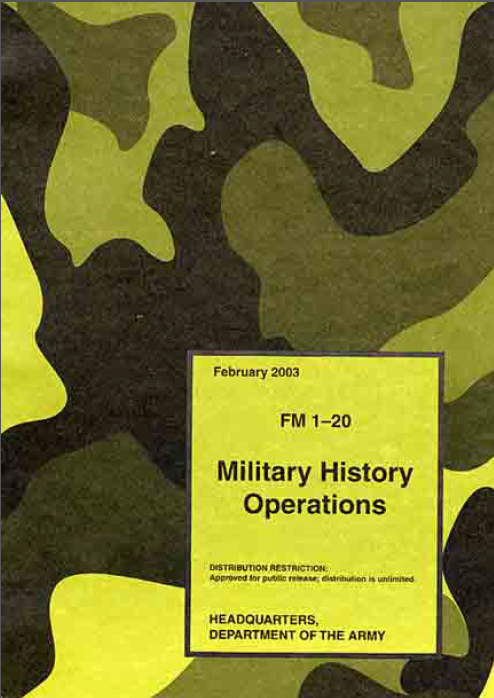 With the recent discussions of the challenges facing U.S. government historians in writing the official military histories of recent conflicts, it might be helpful to provide a brief outline of the structure of the Department of Defense (DOD) offices and programs involved. There are separate DOD agency, joint, and service programs, which while having distinct missions, sometime have overlapping focuses and topics. They are also distinct from other Executive Branch agency history offices, such as the Office of the Historian at the State Department.
With the recent discussions of the challenges facing U.S. government historians in writing the official military histories of recent conflicts, it might be helpful to provide a brief outline of the structure of the Department of Defense (DOD) offices and programs involved. There are separate DOD agency, joint, and service programs, which while having distinct missions, sometime have overlapping focuses and topics. They are also distinct from other Executive Branch agency history offices, such as the Office of the Historian at the State Department.
The Office of the Secretary of Defense has its own Historical Office, which focuses on collecting, preserving, and presenting the history of the defense secretaries. Its primary publications are the Secretaries of Defense Historical Series. Although the office coordinates joint historical efforts among the military services and DOD agency history offices, it does not direct their activities.
The Joint History Office of the Joint Chiefs of Staff (JCS) provides historical support to the Chairman and Vice Chairman of the Joint Chiefs of Staff and to the Joint Staff. Its primary publications are the JCS and National Policy series, as well as various institutional studies and topical monographs.
The Joint History Office also administers the Joint History Program, which includes the history offices of the joint combatant commands. Its primary role is to maintain the history programs of the commanders of the combatant commands. Current guidance for the Joint History Program is provided by Chairman of the Joint Chiefs Instruction 5320.1B, “Guidance for the Joint History Program,” dated 13 January 2009.
Each of the military services also has its own history program. Perhaps the largest and best known is the Army Historical Program. Its activities are defined in Army Regulation 870-5, “Military History: Responsibilities, Policies, and Procedures,” dated 21 September 2007. The program is administered by the Chief of Military History, who is the principal advisor to the Secretary of the Army and the Army Chief of Staff for all historical matters, and is dual-hatted as the director of the U.S. Army Center for Military History.
The Air Force History and Museum Program is outlined in Air Force Policy Directive 84-1, “Historical Information, Property, and Art,” dated 16 September 2005. The Director of Air Force History and Museums, Policies, and Programs oversees the Air Force Historical Studies Office, and its field operating agency, the Air Force Historical Research Agency.
The Navy History Program is managed by the Director of Navy History. Its activities are described in OPNAV Instruction 5750.4E, “Navy History Programs,” dated 18 June 2012. The Navy’s central historical office is the Naval History and Heritage Command, which includes the Navy Department Library and the National Museum of the United States Navy in Washington, D.C.
The U.S. Marine Corps History Division, a branch of Marine Corps University, runs and administers the Marine history program. Its policies, procedures, standards, and responsibilities are outlined in Marine Corps Order 5750.1H, dated 13 February 2009.
In future posts, I will take a closer look at the activities and publications of these programs.
